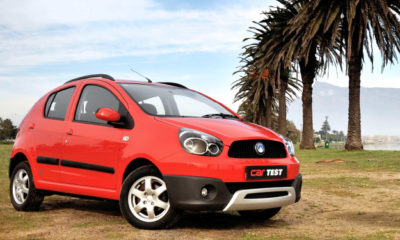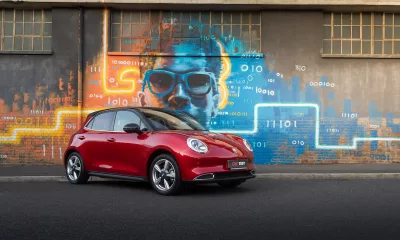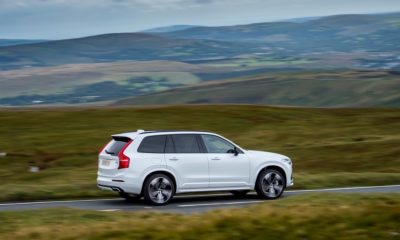APPEARANCE. If ever there was an embodiment of consumer culture’s obsession with artifice in the motoring world, the crossover vehicle is it. A raised ride height and black bumpers and sills are practical on cars that are required to travel on pockmarked tarred or dirt roads, but those very same adornments’ primary purpose is to create an off-roader look sans expensive all-wheel-drive underpinnings. There are other light cars that offer comparable crossover accoutrements to the Geely LCX (pronounced LC Cross) GT, but the most affordable competitor after this Geely, GWM’s Florid Cross, costs almost R30 000 more.
So, because the LCX offers kerb-hopping attitude at a budget-car price, we have pitched it against similarly priced conventional hatchbacks. As a result, the Geely is easily the most distinctive offering at this level of the market.
The standard LC’s po-faced nose gives way to a more purposeful front end, the bear-paw brake-lamps are substituted with triangular designs, black-plastic cladding adorns the front and rear aprons, the ride height goes up to 180 mm and the spare wheel is affixed to the rear hatch. The combination of the LCX’s dinky proportions with rounded corners and the standard roof rails does give off a jellybean-on-a-hike vibe. Still, the exterior finish was put through a rigorous prod-and-pull test and only play in the plastic grille’s attachment to the bumper lip and an exposed bolt on the windscreen wiper were of concern.
The interior is virtually identical to that of the standard LC, with a circular central instrument pod and small dial binnacle. Shiny, hard plastics are the order of the day and the low steering column (which is also offset to the left and therefore the centre of the tiller doesn’t line up with the driver’s sternum) means that a taller driver’s left knee is prone to brush the edge of the facia hang-down. The cabin does feel well screwed together (no creaks or rattles were noticed) and there’s an acceptable amount of passenger legroom, although headroom at the back is limited.
As was the case with the Geely LC GT we tested for the March issue, this LCX has dual front, side and curtain airbags and although the boot is still on the pokey side, Geely fitted beefed-up struts to the hatch of the Cross to compensate for the added mass of the full-sized spare.
The 1,3-litre petrol powerplant is a rather vocal unit, but it does a fair job of punting the car along with the traffic. The quality of the gearshift remains a weak point, however. It’s offset position means that fourth gear sits at your hip, while the long-throw action feels a bit baggy and gives the impression of feeling fragile.
The brakes of the test unit didn’t offer particularly strong stopping times in our 100 km/h to standstill test (see test results) but the ride, although a bit wallowy when tackling corners and rough surfaces, was generally fine.
The steering is town-friendly light, but there’s a lot of play around the dead-ahead point and that, combined with the raised ride height, means the LCX exhibits some float at motorway speeds.
Still, that added ride height does give the car some dirt-road credence. One of CAR’s testers completed a short stint on rutted gravel in the LCX and reported that no panel or trim was dislodged.
Moreover, the Geely LCX GT is lavishly equipped at the price. Air-conditioning, 14-inch alloy wheels, front and rear foglamps, power steering, ABS with EBD, electric windows and mirrors, remote central locking, an MP3-compatable audio system with USB port and rear parking sensors are all fitted as standard.
Test Summary
If you like the looks of the LCX and accept that Geely is still establishing a track record in terms of reliability and after-sales service, the GT makes a fair case for itself as a handy little runabout with a generous helping of kit.
Unfortunately, the Chinese charge’s major opposition remains more established offerings in the used-car market… Are you willing to take a leap of faith?









